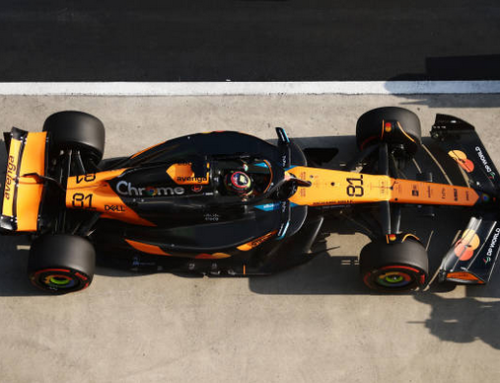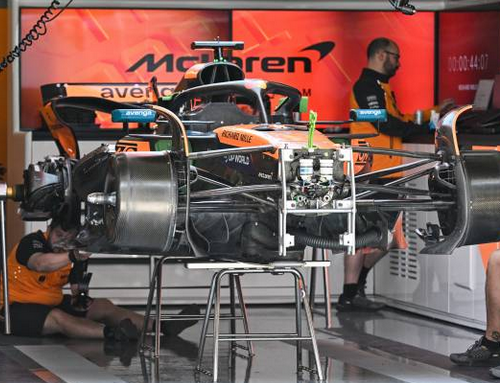The legendary Zandvoort circuit welcomes back the Formula One Circus this weekend. The championship enters its second phase with the Dutch GP at this very iconic venue.
The track
Really quick’, ‘pretty insane’, ‘crazy’ and ‘old-school’ are the words used by the F1 drivers when asked to describe the Zandvoort track that many of them tackled in their junior category days. We’d also add ‘undulating’ to that list.
The Zandvoort track swoops and flows through the sand dunes, creating a rollercoaster-like feel to the lap. And while the circuit was modernised in time for F1’s most recent return – including increasing the banking angle at the famous Tarzan corner to an Indianapolis Motor Speedway-trumping 18 degrees – Zandvoort remains a proper, challenging drivers’ track.
A lap of Zandvoort with Dromo
Racetrack designer Jarno Zaffelli, from Italian Engineering company Dromo, is the man behind the track renovation done in 2021 and the updated design of the track we see today. Dromo’s challenge was to empower the soul of the ‘old-style circuit’, with all the innovations and safety of a modern track. with Dromo we make a lap of the track.
Turn 1: Tarzan – Theater of epic battles, the “new” Tarzan has been reprofiled to allow the cars to overtake on multiple lines.
T2 Gerlach and T3: Hugenholtz – the feeling is to go straight into the wall. Turn 3 is unique in the world. Named after the original designer of Suzuka and former Director of the Zandvoort track, the outer edge of the track is more than 4 meters higher than the inner one, despite the curve features just 17 meters in radius. Dipping into this curve from T2, the drivers get the impression that it is almost the curve itself, opening up like a big wave to surf or to sink into, coming towards them with the intention to scare them.
Exiting T3 the drivers will ‘climb’ uphill with a 8-meter difference in height, before facing T4, and then downhill of a change of level of 7.5 meters to tackle T5 towards left and then – like in a rollercoaster- back with a 8-meter uphill, through the bumpy T6 (Rob Slotemaker).
T7: Scheivlak with a 5.6 degree of inclination, will see the F1 guys trying to do it full throttle, downhill, with a lateral run off that’s climbing 10 meters on their left.
In the second half of the lap, between Turn 8 and 11 we find a section with almost zero elevation, with all bankings below 3 degrees. That will be the real compromise section for the engineers. In fact, a car with a mechanical set-up for banking curves will be much more complicated to manage in this section, increasing the driving difficulty until the violent braking to enter the turn 11 and forcing the teams to choose a compromise in the settings, especially on the suspension/ aero package to try to get the most out of every stretch of track.
Turn 12 (Hans Ernst): from a single seater point of view it is impossible to see the apex of the corner. From T11 the entry it’s blind and the punishment for mistakes it is not less than a gravel run off.
Turn 13 (Kumho): that is the key to enter in the final “straight”. That corner has been designed to make the cars understeering if too aggressive on the internal kerb, wasting the opportunity to be fast on the main straight.
Turn 14 (Arie Luyendijk): now a 18-dregree elevation to do flat out and tackle the finish straight. The wide turning radius and the up to 18 degrees banking creates in fact the extension of the main straight. It will anticipate of 340 metres the point where the F1 drivers can go flat out, transforming the actual 678 metres in a potential 1 km straight, with the chance to open the DRS. This will allow an overtaking point at the braking of Turn 1. Thanks to the long T14 there could also be photo-finish arrival.
Curiosities
Mountains or run-off areas?
Another unique feature of Zandvoort track are the run-off areas of turn 7 and turn 13, both similar more to mountains than to the run-off areas that we are used to. The almost 7 meters of difference in height present in both escape routes allow to have a high degree of deceleration of the cars, while maintaining the same spaces, and, therefore, to guarantee safety.
The asphalt
The asphalt mix for all the banked corners and the high-speed sections was studied specifically for Zandvoort. Called “the Flying Dutch”, the compound is a special mix of Norwegian stone and polymer modified bitumen provided by Shell with a specific texture for this type of curve, which simultaneously guarantees maximum grip in all conditions along with appropriate drainage. The asphalt formula together with the complex drainage system allow a very good water evacuation. An extra system of pumps allows to keep the Turn 12 (the lowest point of the circuit) dry in all weather conditions.
The tyres
The vertical loads represent a very significant additional stress for the tires. In the high-speed and high banking corners, the external tires will have to withstand the heaviest vertical loads of the season. But the production of marbles will be very limited, allowing for neck a neck competition and multiple lines to be taken.
The drivers will have to pay attention to the front right during the race. In the last corner, the compression stresses the outer tire, while the inner one tends to discharge and slip causing more stress. Another challenge within the challenge, the drivers will have to face.
Maria Guidotti






Leave A Comment